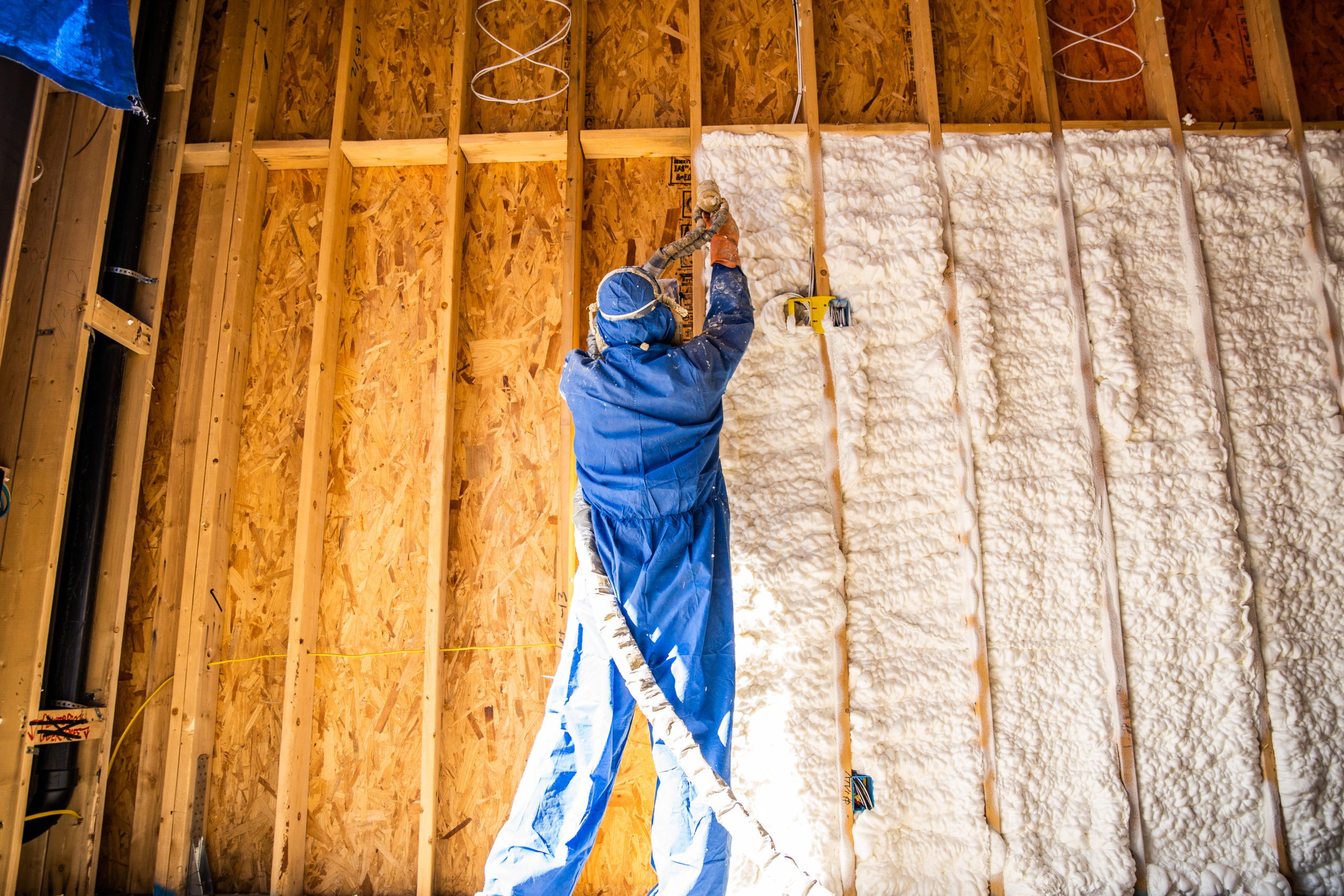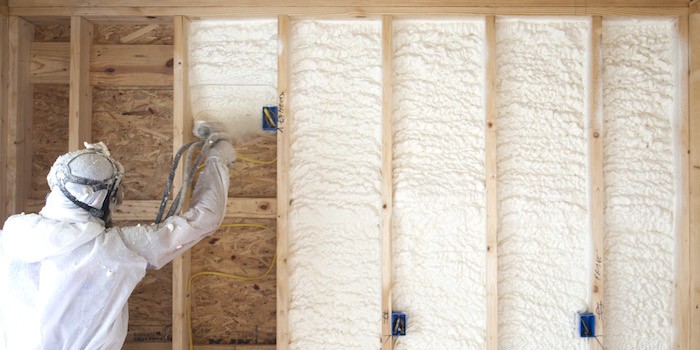The Process of Applying Spray Foam: What You Required to Know
The Process of Applying Spray Foam: What You Required to Know
Blog Article
Spray Foam: The Ultimate Remedy for Air Sealing and Insulation
Spray foam insulation has emerged as a leading service for reliable air securing and thermal insulation, providing a distinct mix of properties that set it apart from conventional methods. Recognizing the complete range of its advantages, setup processes, and contrasts with various other insulation kinds is important for making notified decisions.
What Is Spray Foam?
Spray foam is a versatile insulation material that combines the concepts of air securing and thermal resistance to improve power performance in structures. Composed mainly of polyurethane or various other similar substances, spray foam is applied as a liquid that broadens upon contact with surfaces, creating a strong, continual layer of insulation. This distinct residential property permits it to fill voids, fractures, and spaces that traditional insulation materials may overlook, providing an exceptional air seal.
There are 2 major kinds of spray foam: open-cell and closed-cell. Open-cell spray foam is lighter and a lot more versatile, offering superb audio absorption and a lower R-value per inch - Spray Foam. In contrast, closed-cell spray foam is denser, giving a higher R-value, moisture resistance, and added structural integrity to constructing components
The application process typically includes specialized devices, making sure a smooth application that abides by various substrates, consisting of concrete, wood, and steel. This flexibility makes spray foam suitable for both new building and constructions and retrofitting existing frameworks. Its capacity to produce a closed obstacle dramatically contributes to reducing power consumption and improving interior air quality, thus making it a recommended choice amongst contractors and home owners alike.
Benefits of Spray Foam Insulation
One of one of the most considerable advantages of spray foam insulation is its remarkable ability to produce a constant air obstacle, which efficiently decreases energy loss. Unlike conventional insulation products, spray foam increases to fill splits and voids, making sure that air leak is dramatically minimized. This particular not just boosts power effectiveness yet additionally brings about reduce energy expenses over time.
Additionally, spray foam insulation supplies exceptional thermal resistance, adding to an extra stable indoor atmosphere. Its high R-value per inch enables effective insulation in restricted spaces, making it excellent for attics, wall surfaces, and crawl areas. In addition, the moisture-resistant residential properties of spray foam assistance prevent mold and mold development, advertising healthier living problems.
One more important advantage of spray foam insulation is its sound-dampening high qualities (Spray Foam). It efficiently reduces sound transmission between spaces, creating a quieter and more comfy home atmosphere. The longevity of spray foam additionally attracts attention, as it does not droop or work out with time, maintaining its performance throughout its life-span
Exactly How Spray Foam Functions
Recognizing exactly how spray foam insulation functions is crucial for appreciating its effectiveness in air securing and thermal resistance. Spray foam insulation includes 2 main elements: isocyanate and polyol resin. When these components are mixed, they undergo a chain reaction that creates the product to broaden swiftly, developing a dense foam that fills up spaces, cavities, and splits.
As the foam increases, it follows surfaces, developing an impermeable seal that substantially reduces air seepage. This particular makes spray foam insulation very effective at avoiding drafts and wetness penetration, which can bring about energy loss and damage in time. In addition, the closed-cell version of spray foam offers remarkable thermal resistance because of its rigid structure, effectively minimizing warmth transfer.
The unique homes of spray foam allow it to adapt irregular surfaces, making certain comprehensive insurance coverage and a smooth barrier. As a result, spray foam insulation not just improves energy performance but also adds to enhanced indoor air quality by lowering the build-up of allergens and pollutants. Eventually, understanding the mechanics behind spray foam underscores its role as a superior choice for insulation and air sealing in both domestic and commercial applications.
Setup Process Introduction

Prior to setup, the room should be sufficiently cleansed and prepped, guaranteeing that surface areas are totally free from dampness, particles, and dust. Due to the fact that pollutants can compromise bond and total performance, this action is important. When the area is prepared, the application involves blending both elements of the spray foam, which expands upon get in touch with and fills gaps effectively.
Trained experts should conduct the installment, using specialized tools to make certain uniform coverage and optimal thickness. Safety and security safety measures, including putting on protective gear and guaranteeing correct air flow, browse around here are vital throughout this procedure. After application, the foam commonly treatments rapidly, forming a strong obstacle that enhances power performance.
Comparing Spray Foam to Standard Insulation
When examining insulation options, spray foam insulation stands out in comparison to standard materials such as fiberglass and cellulose. Unlike fiberglass and cellulose, which can allow air infiltration, spray foam broadens upon application, filling gaps and crevices to develop an impermeable seal.
In addition, spray foam gives a higher R-value per inch than standard insulation types, using even more effective thermal resistance in a thinner profile. This particular is especially advantageous precede with restricted cavity deepness. Spray foam is resistant to wetness and mold growth, which can be a significant concern with cellulose and fiberglass, particularly in moist settings.
However, spray foam insulation commonly lugs a higher upfront expense than its traditional counterparts. Property owners have to weigh this preliminary financial investment versus long-term power savings and performance benefits. Inevitably, while both insulation kinds serve their purpose, spray foam becomes an advanced service for modern-day insulation demands, specifically in regards to air securing and thermal efficiency.

Final Thought
In recap, spray foam insulation stands for a highly reliable solution for achieving ideal air sealing and thermal resistance. Its one-of-a-kind homes, including dampness resistance and audio dampening, make it suitable for different applications in both brand-new constructions and retrofitting tasks (Spray Foam). Although the preliminary prices might be greater compared to standard insulation materials, the lasting benefits, such as substantial power cost savings and enhanced interior air top quality, validate the investment and highlight its worth in modern-day structure methods.
Spray foam insulation has emerged as a leading option for efficient air securing and thermal insulation, offering a distinct mix of buildings that establish it apart from conventional approaches.Spray foam is a flexible insulation material that incorporates the concepts of air securing and thermal resistance to improve power efficiency in buildings.When evaluating insulation options, spray foam insulation stands out in contrast address to typical products such as fiberglass and cellulose. Eventually, while both insulation types offer their purpose, spray foam arises as a more sophisticated option for contemporary insulation requirements, specifically in terms of air securing and thermal efficiency.
In recap, spray foam insulation stands for a very effective service for accomplishing optimum air sealing and thermal resistance.
Report this page